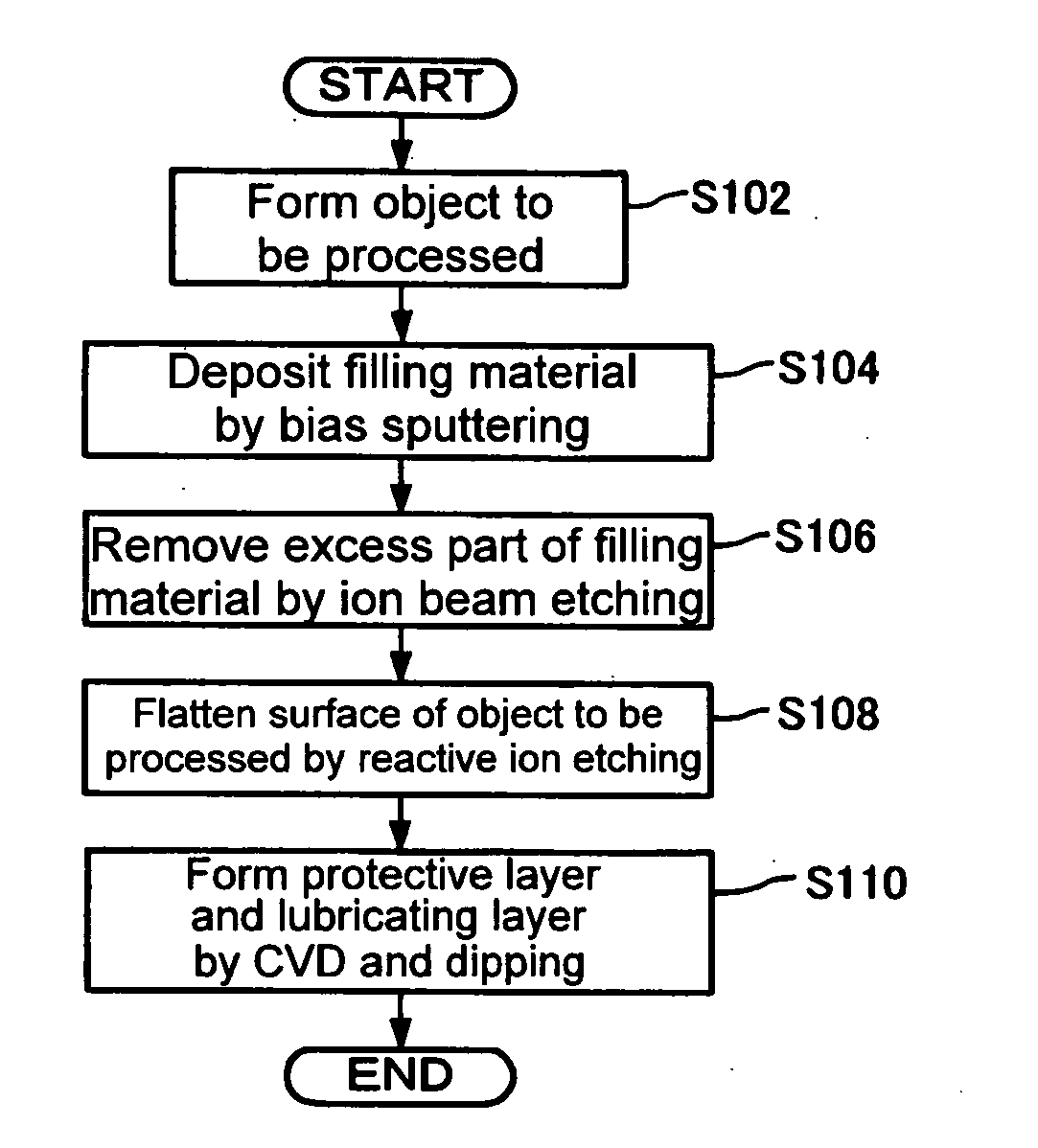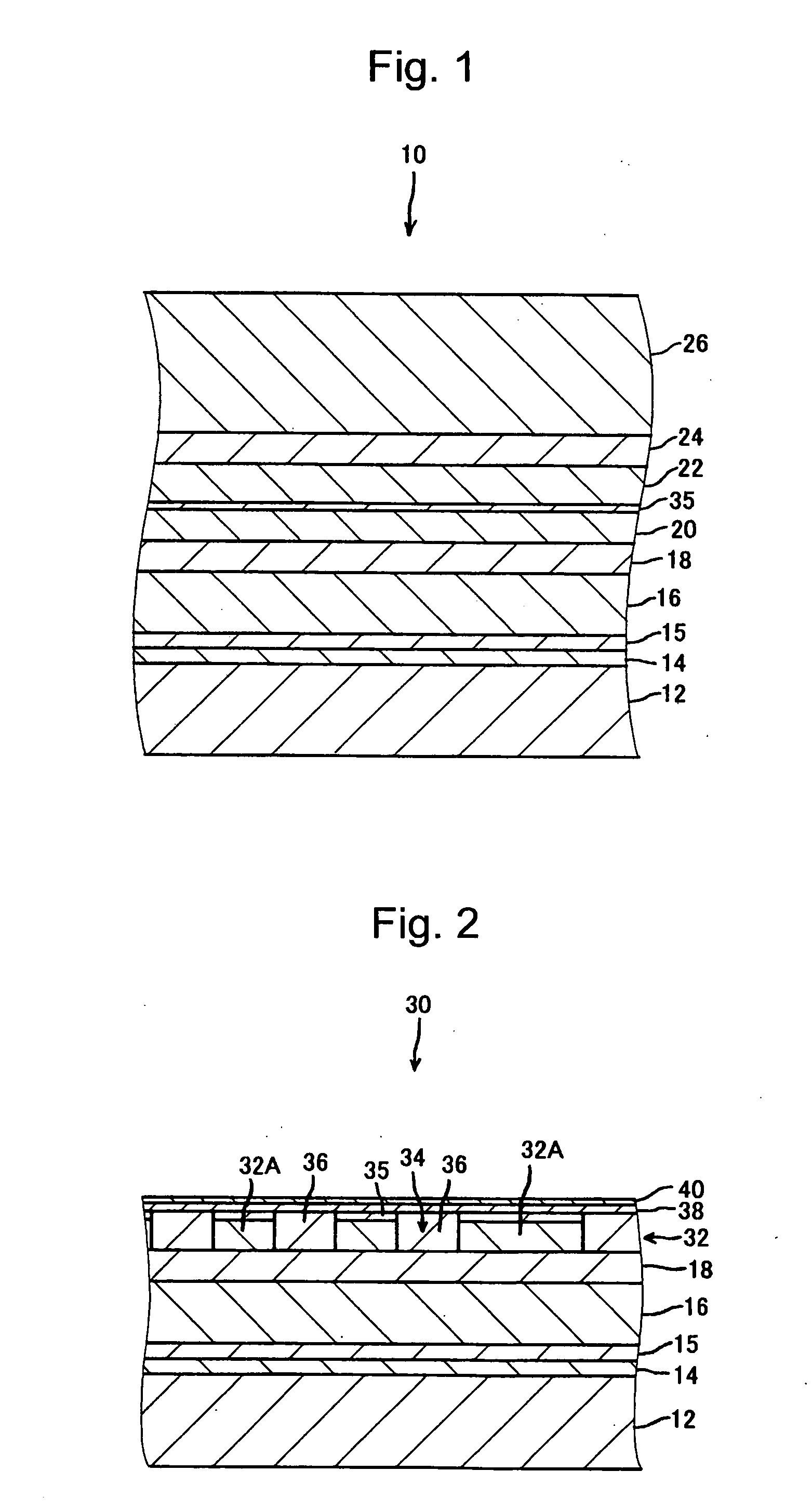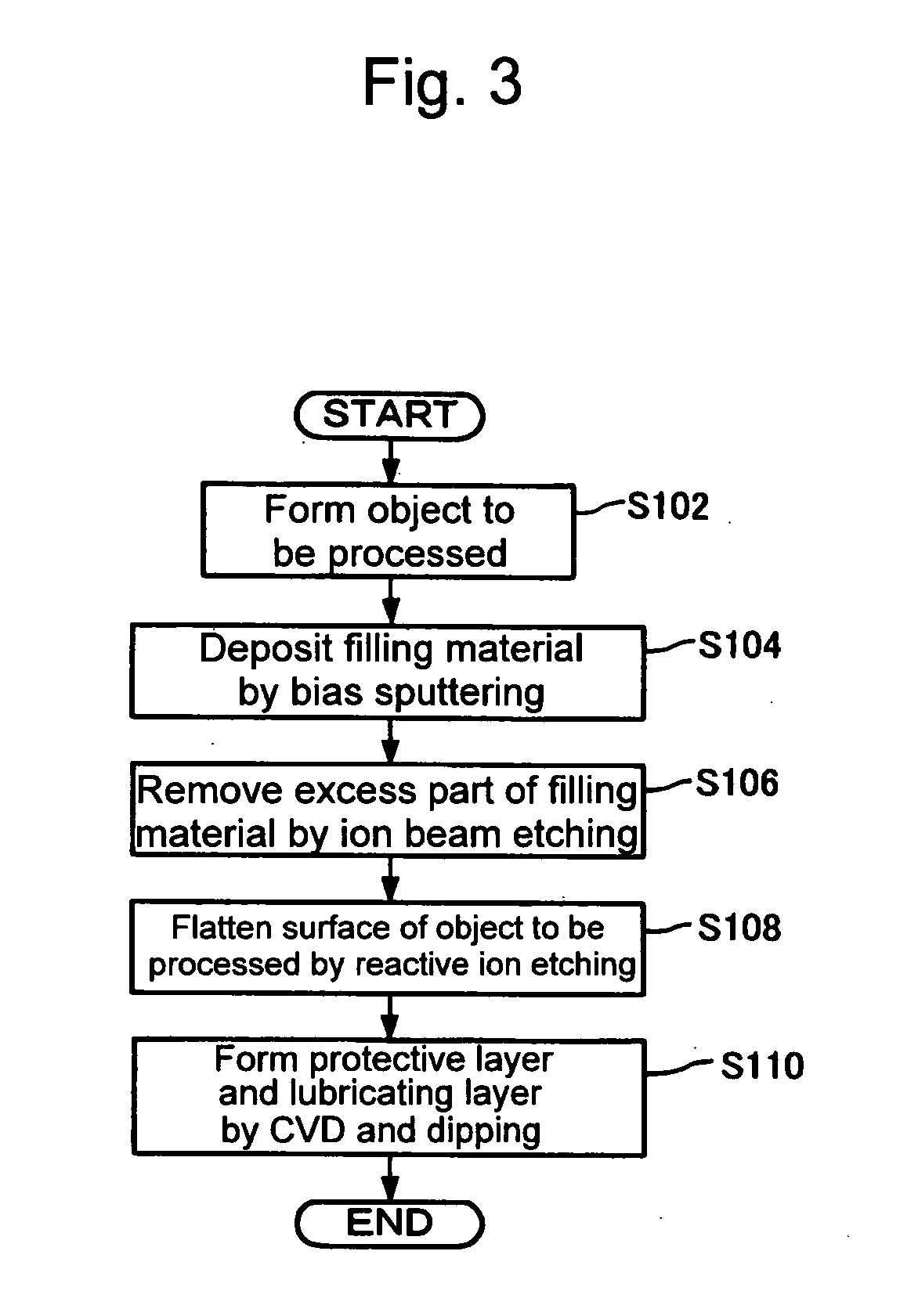Method for manufacturing magnetic recording medium
- Summary
- Abstract
- Description
- Claims
- Application Information
AI Technical Summary
Benefits of technology
Problems solved by technology
Method used
Image
Examples
Embodiment Construction
[0047] Preferred exemplary embodiments of the present invention are now described with reference to the drawings.
[0048] A first exemplary embodiment of the present invention relates to a method for manufacturing a magnetic recording medium 30. The method includes: processing a starting body of an object to be processed 10 shown in FIG. 1, in which a continuous recording layer 20 and other layers are formed over a substrate 12, so as to divide the continuous recording layer 20 into a number of recording elements 32A (convex portions of a recording layer), as shown in FIG. 2, and form the recording layer 32 having a predetermined concavo-convex pattern; and filling concave portions 34 between the recording elements 32A (concave portions of the concavo-convex pattern) with a filling material 36 to flatten a surface. The manufacturing method of the first exemplary embodiment has a feature in a filling material removing step of removing an excess part of the filling material 36 and a fl...
PUM
| Property | Measurement | Unit |
|---|---|---|
| Angle | aaaaa | aaaaa |
| Angle | aaaaa | aaaaa |
Abstract
Description
Claims
Application Information
 Login to View More
Login to View More - R&D
- Intellectual Property
- Life Sciences
- Materials
- Tech Scout
- Unparalleled Data Quality
- Higher Quality Content
- 60% Fewer Hallucinations
Browse by: Latest US Patents, China's latest patents, Technical Efficacy Thesaurus, Application Domain, Technology Topic, Popular Technical Reports.
© 2025 PatSnap. All rights reserved.Legal|Privacy policy|Modern Slavery Act Transparency Statement|Sitemap|About US| Contact US: help@patsnap.com



